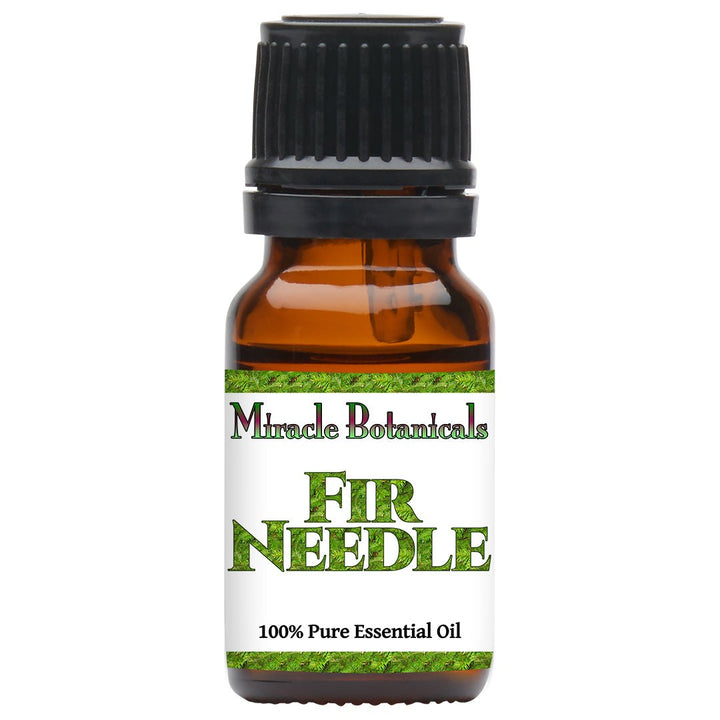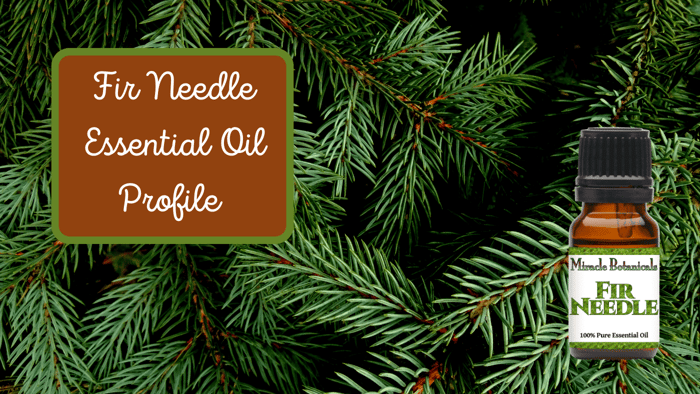Table of Contents
The Science of Siberian Fir Needle Essential Oil: Nature's Forest Pharmacy
The thought of Fir Needle usually evokes images of a wintery wonderland and memories of Christmas and snow, but this tree and its therapeutic essential oil is great any time of year, on any occasion, because of its incredible medicinal properties and immune-boosting qualities.
Fir Needle Essential Oil (Abies Siberica)

$10.97
Botanical Name: Abies Siberica Plant Part: Needles Method of Extraction: Steam Distilled Country of Origin: Russia Color/Consistency: Clear With Thin Consistency Aroma: Fresh, Green, Soft Balsamic, Pine Perfumery Note: Middle Main Chemical Components: Bornyl acetate (29.99%), Camphene (19.56%), delta-3-Carene (13.02%),… read more
Product Details:
- Botanical Name: Abies Siberica
- Plant Part: Needles
- Method of Extraction: Steam Distilled
- Country of Origin: Russia
- Color/Consistency: Clear with thin consistency
- Aroma: Fresh, green, soft balsamic, pine
- Perfumery Note: Middle
- Main Chemical Components: Bornyl acetate (29.99%), Camphene (19.56%), delta-3-Carene (13.02%), alpha-Pinene (11.90%)
The Guardian Trees of the Forest
Our Fir Needle Essential Oil is steam distilled from the needles of the Abies Sibirica species of Fir tree grown in the majestic mountains of northern Russia. In many cultures, these trees are known as "forest healers" due to their ability to purify the soil and air and enhance the health and mood of people that spend time in their presence.
In Japan, coniferous forests are regarded as special places—even considered sacred—for their effect on wellbeing, where 'forest bathing' (Shinrin-yoku) is recognized as a legitimate form of relaxation and therapy. This form of healing involves 'bathing' yourself in the light, sounds, and smells of the forest to increase energy, elevate mood, reduce anxiety and increase immune response.
The fresh, woody, camphorous aroma of Fir Needle Essential Oil conjures feelings of relaxation, while simultaneously creating a euphoric and revitalized disposition, guiding you into a balanced state of being.
The Chemical Architecture of Healing
Fir Needle essential oil contains numerous chemical components, with approximately 17 major constituents identified through GC-MS analysis. Bornyl acetate comprises the highest proportion at 29-45% of its total composition, followed by camphene at 10-20%, and alpha-pinene at 5-15%. But what do these compounds actually do for your health?
Chemical Composition Chart: Siberian Fir Needle Oil
| Compound | Percentage Range | Primary Therapeutic Properties |
|---|---|---|
| Bornyl Acetate | 29-45% | Anti-inflammatory, analgesic, calming, skin lightening |
| Camphene | 10-20% | Mucolytic (breaks up mucus), antioxidant, anti-inflammatory |
| α-Pinene | 5-15% | Antibacterial, antiviral, anti-inflammatory, bronchodilator |
| Delta-3-Carene | 11-13% | Anti-inflammatory, bone health support |
| Limonene | 2-8% | Mood-enhancing, antioxidant, immune-supporting |
| β-Pinene | Variable | Respiratory support, antimicrobial |
| Minor Components | <10% combined | Borneol, caryophyllene, β-phellandrene, tricyclene |
These dominant compounds work synergistically—bornyl acetate provides anti-inflammatory and calming properties, camphene acts as a powerful mucolytic agent to break up congestion, and alpha-pinene delivers antibacterial and antiviral benefits.
What Sets Fir Needle Apart from Other Conifers
While all conifer oils share the same family lineage (Pinaceae), the critical difference lies in chemical dominance rather than chemical diversity—meaning that while fir, pine, and spruce oils contain many of the same compounds, the dominant constituents in each oil are completely distinct.
What Makes Fir Needle Essential Oil Unique:
Highest Bornyl Acetate Content: Fir Needle contains significantly more bornyl acetate (up to 45%) than most other conifer oils, making it particularly effective for topical anti-inflammatory applications and respiratory support.
Balanced Monoterpene Profile: While pine oils can smell harsh or "sharp," Fir Needle carries a more landscaped, forest-collective scent profile that is balsamic, woody, and green rather than crisp and herbal.
Gentler on Skin: The high sesquiterpene content in some conifer oils makes them more irritating, but Fir Needle's balanced chemistry makes it suitable for facial skincare and sensitive skin applications.
Superior Respiratory Support: The unique combination of camphene (mucolytic), alpha-pinene (bronchodilator), and bornyl acetate (anti-inflammatory) creates a triple-action respiratory remedy.
Ancient Wisdom: Traditional Uses Across Cultures
Native American Medicine
Native American tribes revered Fir trees for both medicinal and spiritual purposes, using the needles in purification ceremonies and believing the tree had the power to cleanse the soul. Plains Indian tribes commonly burned fir needles as incense, while northern Algonquian tribes bundled spruce and fir needles into sachets or herbal pillows to protect against illness.
Indigenous peoples would stuff conifer needles (including pine and fir) in their pillows to promote peaceful sleep, and tree resin was used as a sudatory (sweat therapy) for women after giving birth.
Japanese Forest Medicine: The Science of Shinrin-Yoku
In Japan, coniferous forests are regarded as special places—even considered sacred—for their effect on wellbeing, where 'forest bathing' (Shinrin-yoku) is recognized as a form of relaxation and therapy. While Japanese Shinto and Buddhist traditions have long celebrated the spiritual significance of forests, the formal practice of Shinrin-yoku was coined in 1982 by Tomohide Akiyama, director of the Japanese Ministry of Agriculture, Forestry, and Fisheries, as a response to increasing urbanization and tech-boom burnout.
The Development of Forest Therapy:
In the 1980s, the Japanese government launched a series of studies to investigate the health benefits of spending time in forests, examining physiological and psychological effects such as blood pressure, heart rate, cortisol levels, and immune system responses. After several studies were conducted during the 1980s, forest bathing was seen to be an effective therapy method.
In the 1990s, the Japanese Government started to fund designated 'Shinrin Yoku Trails,' with the first trail opening in Akasawa, Nagano prefecture. There are now 65 Forest Therapy centres across Japan, each with a Forest Therapy base, marked trails, and certified Forest Therapy guides.
The Science Behind the Practice:
Fir trees and other conifers are called "guardian trees" or "forest healers" across many cultures because of their legendary health-promoting properties. But what makes these trees so powerful? The answer lies in phytoncides.
Phytoncides are wood essential oils—antimicrobial volatile organic compounds like α-pinene and limonene—that trees release to defend against insects, fungi, and bacteria. When humans breathe in these volatile substances during forest bathing, research shows they significantly increase natural killer (NK) cell activity, the number of NK cells, and levels of intracellular anti-cancer proteins in lymphocytes.
Studies found that the increased NK activity lasted for more than 7 days after forest bathing trips in both male and female subjects. Phytoncides significantly enhance human NK activity through induction of intracellular perforin, granzyme A, and granulysin—proteins that help the body fight tumors and virus-infected cells.
Remarkable Research Findings:
To determine if the aromatic compounds were the key factor, researchers vaporized essential oils from trees (like Japanese cypress) in urban hotel rooms overnight. Even without the forest environment, phytoncide exposure significantly increased NK activity and immune-supporting proteins while decreasing stress hormones.
Studies showed that participants walking through forests for even just a few hours experienced decreased pulse rate, blood pressure, and concentration of the stress hormone cortisol. Conifer trees like fir, pine, and spruce are especially potent producers of phytoncides, which is why their fragrance has such powerful immune-boosting effects.
Why It Matters:
Since the 1970s, Japan has seen substantial increases in anxiety and stress-related illness attributed to increased urbanization, leading to a growing interest in finding ways to reconnect with nature. The practice was developed not only to inspire the Japanese public to reconnect with nature but also as a means to protect the forests—reasoning that if people spent time in forests and found therapeutic comfort, they would want to protect them.
Today, forest bathing has gained international recognition and spread to countries worldwide, including South Korea (which opened 32 therapeutic forests by 2020) and the United States, where certified guides now conduct forest therapy sessions.
Traditional Siberian Use
The Siberian Fir tree grows across vast areas including North and Eastern Russia, Siberia, Turkey, Mongolia, and Northern China, surviving in temperatures as low as -50 degrees Fahrenheit. In these harsh climates, local populations have historically relied on fir needle preparations for respiratory ailments, wound healing, and as a fortifying winter tonic—practical wisdom developed from living in close relationship with these resilient trees.
Modern Therapeutic Applications
Respiratory Health Champion
Fir Needle Essential Oil is a go-to for supporting upper respiratory health and increasing the fortitude of the lungs and airway passages. A great time to whip out this oil is when you feel the symptoms of a cold coming on or when you are having trouble with seasonal allergies.
During the damp, brisk months of the year, we tend to be outside less and in enclosed spaces with recycled air, which usually carries airborne illnesses. Using Fir Needle Essential Oil in a diffuser can help ward off those pesky sicknesses that circulate in the winter months and purify the environment in enclosed spaces.
Muscle & Joint Relief
Also great for muscle aches and arthritic pain, Fir Needle Essential Oil can be used in a massage blend to work out all the kinks in your body and to act as an analgesic to reduce chronic pain in your joints. The anti-inflammatory and antispasmodic properties of bornyl acetate and alpha-pinene make Fir Needle excellent for post-workout muscle recovery.
Emotional Balance
When you feel the symptoms of fatigue or gloominess setting in, Fir Needle's balanced chemistry creates both relaxation and euphoric revitalization simultaneously. Fir oils are considered balancing with uplifting properties, particularly helpful during winter months for those who experience seasonal mood changes.
Practical Recipes & Blends
When you feel the symptoms of fatigue or gloominess setting in, we recommend trying out one of the Fir Needle Essential Oil recipes below so that you can snap out of your funk and get back to living life to its fullest!
Shower Steam Blend
Release a foresty, floral aroma and transform your bathroom into a peaceful log cabin in the woods.
- 3 drops Fir Needle Essential Oil
- 3 drops Ylang Ylang Essential Oil
Add this blend onto a wet washcloth while you shower.
Deep Breath Diffuser Blend
Try out this diffuser combo when you want to instill a sense of calm and tranquility in your home or when you need a minute to catch your breath.
- 2 drops Fir Needle Essential Oil
- 2 drops Lavender Essential Oil
- 2 drops Vetiver Essential Oil
Bug Blaster Diffuser Blend
Creepy, crawly pests won't leave you alone? Keep them at bay with this lemony, camphorous, repellent blend.
- 3 drops Fir Needle Essential Oil
- 3 drops Citronella Essential Oil
- 3 drops Lemongrass Essential Oil
The Perfect Forest Celebration Oil
Unlike cedarwood oils that have a 6-8 year shelf life, needle oils from fir trees are abundant in monoterpenes and have a shelf life of 1-2 years, making them best used fresh during peak forest season.
October represents the transition into the season when respiratory support becomes most crucial. The principal constituents in Abies sibirica—including bornyl acetate, camphene, α-pinene, limonene, and delta-3-carene—are practically designed for air refreshment and purification.
Conclusion: The Guardian Tree's Gift
If you are feeling called to add Fir Needle Essential Oil to your aromatherapy collection, you can be sure to enjoy the multitude of wellness benefits it has to offer. From the wisdom of indigenous healers to modern GC-MS analysis and groundbreaking immunology research, the evidence consistently points to one truth: Fir trees are the guardian trees of our planet, and their essential oils represent nature's most complete respiratory and immune-supporting remedy.





